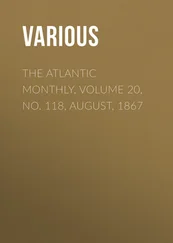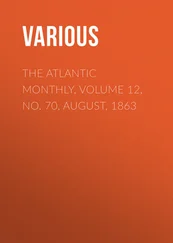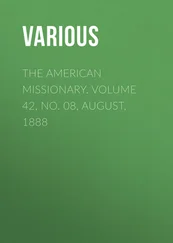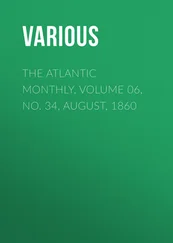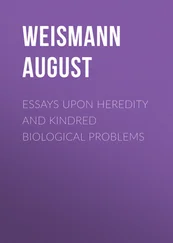August Weismann - Studies in the Theory of Descent, Volume I
Здесь есть возможность читать онлайн «August Weismann - Studies in the Theory of Descent, Volume I» — ознакомительный отрывок электронной книги совершенно бесплатно, а после прочтения отрывка купить полную версию. В некоторых случаях можно слушать аудио, скачать через торрент в формате fb2 и присутствует краткое содержание. Жанр: foreign_antique, foreign_prose, на английском языке. Описание произведения, (предисловие) а так же отзывы посетителей доступны на портале библиотеки ЛибКат.
- Название:Studies in the Theory of Descent, Volume I
- Автор:
- Жанр:
- Год:неизвестен
- ISBN:нет данных
- Рейтинг книги:4 / 5. Голосов: 1
-
Избранное:Добавить в избранное
- Отзывы:
-
Ваша оценка:
- 80
- 1
- 2
- 3
- 4
- 5
Studies in the Theory of Descent, Volume I: краткое содержание, описание и аннотация
Предлагаем к чтению аннотацию, описание, краткое содержание или предисловие (зависит от того, что написал сам автор книги «Studies in the Theory of Descent, Volume I»). Если вы не нашли необходимую информацию о книге — напишите в комментариях, мы постараемся отыскать её.
Studies in the Theory of Descent, Volume I — читать онлайн ознакомительный отрывок
Ниже представлен текст книги, разбитый по страницам. Система сохранения места последней прочитанной страницы, позволяет с удобством читать онлайн бесплатно книгу «Studies in the Theory of Descent, Volume I», без необходимости каждый раз заново искать на чём Вы остановились. Поставьте закладку, и сможете в любой момент перейти на страницу, на которой закончили чтение.
Интервал:
Закладка:
If with reference to the question as to the precise conditions of life in caterpillars I was frequently driven to my own observations, it was because I found as good as no previous work bearing upon this subject. It was well known generally that many caterpillars were differently marked and coloured when young to what they were when old; in some very striking cases brief notices of this fact are to be found in the works, 1 1 A most minute and exact description of the newly hatched larva of Chionobas Aëllo is given by the American entomologist, Samuel H. Scudder. Ann. Soc. Ent. de Belgique, xvi., 1873.
more especially, of the older writers, and principally in that of the excellent observer Rösel von Rosenhof, the Nuremberg naturalist and miniature painter. In no single case, however, do the available materials suffice when we have to draw conclusions respecting the phyletic development. We distinctly see here how doubtful is the value of those observations which are made, so to speak, at random, i. e. without some definite object in view. Many of these observations may be both good and correct, but they are frequently wanting precisely in that which would make them available for scientific purposes. Thus everything had to be established de novo , and for this reason the investigations were extended over a considerable number of years, and had to be restricted to a small and as sharply defined a group as possible – a group which was easily surveyed, viz. that of the Hawk-moths or Sphinges.
Since the appearance of the German edition of this work many new observations respecting the markings of caterpillars have been published, such, for example, as those of W. H. Edwards and Fritz Müller. I have, however, made but little use of them here, as I had no intention of giving anything like a complete ontogeny of the markings in all caterpillars: larval markings were with me but means to an end, and I wished only to bring together such a number of facts as were necessary for drawing certain general conclusions. It would indeed be most interesting to extend such observations to other groups of Lepidoptera.
The third essay also, for similar reasons, is based essentially upon the same materials, viz. the Lepidoptera. It is therein attempted to approach the general problem – does there or does there not exist an internal transforming force? – from a quite different and, I may say, opposite point of view. The form-relationships of Lepidoptera in their two chief stages of development, imago and larva, are therein analysed, and by an examination of the respective forms it has been attempted to discover the nature of the causes which have led thereto.
I may be permitted to say that the fact here disclosed of a different morphological , with the same genealogical relationship, appears to me to be of decided importance. The agreement of the conclusions following therefrom with the results of the former investigation has, at least in my own mind, removed the last doubts as to the correctness of the latter.
The fourth and shortest essay on the “Transformation of the Axolotl into Amblystoma,” starts primarily with the intention of showing that cases of sudden transformation are no proof of per saltum development. When this essay first appeared the view was still widely entertained that we had here a case proving per saltum development. That this explanation was erroneous is now generally admitted, but I believe that those who suppose that we have here to deal with some quite ordinary phenomenon which requires no explanation, now go too far towards the other extreme. The term “larval reproduction” is an expression , but no explanation ; we have therefore to attempt to find out the true interpretation, but whether the one which I have given is correct must be judged of by others.
These four essays lead up to a fifth and concluding one “On the Mechanical Conception of Nature.” Whilst the results obtained are here summed up, it is attempted to form them into a philosophical conception of Nature and of the Universe. It will be thought by many that this should have been left to professed philosophers, and I readily admit that I made this attempt with some misgiving. Two considerations, however, induced me to express here my own views. The first was that the facts of science are frequently misunderstood, or at any rate not estimated at their true value, by philosophers; 2 2 I am aware that this certainly cannot be said of philosophers like Lotze or Herbert Spencer; but these are at the same time both naturalists and philosophers.
the second consideration was, that even certain naturalists and certainly very many non-naturalists, turn distrustfully from the results of science, because they fear that these would infallibly lead to a view of the Universe which is to them unacceptable, viz. the materialistic view. With regard to the former I wished to show that the views of the development of organic Nature inaugurated by Darwin and defended in this work are certainly correctly designated mechanical ; with reference to the latter I wished to prove that such a mechanical conception of the organic world and of Nature in general, by no means leads merely to one single philosophical conception of Nature, viz. to Materialism, but that on the contrary it rather admits of legitimate development in a quite different manner.
Thus in these last four essays much that appears heterogeneous will be found in close association, viz. scientific details and general philosophical ideas. In truth, however, these are most intimately connected, and the one cannot dispense with the other. As the detailed investigations of the three essays find their highest value in the general considerations of the fourth, and were indeed only possible by constantly keeping this end in view, so the general conclusions could only grow out of the results of the special investigations as out of a solid foundation. Had the new materials here brought together been already known, the reader would certainly have been spared the trouble of going into the details of special scientific research. But as matters stood it was indispensable that the facts should be examined into and established even down to the most trifling details. The essay “On the Origin of the Markings of Caterpillars” especially, had obviously to commence with the sifting and compilation of extensive morphological materials.
August Weismann.Freiburg in Baden,
November, 1881.
Part I. ON THE SEASONAL DIMORPHISM OF BUTTERFLIES
I. The Origin and Significance of Seasonal Dimorphism
The phenomena here about to be subjected to a closer investigation have been known for a long period of time. About the year 1830 it was shown that the two forms of a butterfly ( Araschnia ) which had till that time been regarded as distinct, in spite of their different colouring and marking really belonged to the same species, the two forms of this dimorphic species not appearing simultaneously but at different seasons of the year, the one in early spring, the other in summer. To this phenomenon the term “seasonal dimorphism” was subsequently applied by Mr. A. R. Wallace, an expression of which the heterogeneous composition may arouse the horror of the philologist, but, as it is as concise and intelligible as possible, I propose to retain it in the present work.
The species of Araschnia through which the discovery of seasonal dimorphism was made, formerly bore the two specific names A. Levana and A. Prorsa . The latter is the summer and the former the winter form, the difference between the two being, to the uninitiated, so great that it is difficult to believe in their relationship. A. Levana (Figs. 1 and 2, Plate I Конец ознакомительного фрагмента. Текст предоставлен ООО «ЛитРес». Прочитайте эту книгу целиком, купив полную легальную версию на ЛитРес. Безопасно оплатить книгу можно банковской картой Visa, MasterCard, Maestro, со счета мобильного телефона, с платежного терминала, в салоне МТС или Связной, через PayPal, WebMoney, Яндекс.Деньги, QIWI Кошелек, бонусными картами или другим удобным Вам способом.
.) is of a golden brown colour with black spots and dashes, while A. Prorsa (Figs. 5 and 6, Plate I Конец ознакомительного фрагмента. Текст предоставлен ООО «ЛитРес». Прочитайте эту книгу целиком, купив полную легальную версию на ЛитРес. Безопасно оплатить книгу можно банковской картой Visa, MasterCard, Maestro, со счета мобильного телефона, с платежного терминала, в салоне МТС или Связной, через PayPal, WebMoney, Яндекс.Деньги, QIWI Кошелек, бонусными картами или другим удобным Вам способом.
.) is deep black with a broad white interrupted band across both wings. Notwithstanding this difference, it is an undoubted fact that both forms are merely the winter and summer generations of the same species. I have myself frequently bred the variety Prorsa from the eggs of Levana , and vice versâ .
Интервал:
Закладка:
Похожие книги на «Studies in the Theory of Descent, Volume I»
Представляем Вашему вниманию похожие книги на «Studies in the Theory of Descent, Volume I» списком для выбора. Мы отобрали схожую по названию и смыслу литературу в надежде предоставить читателям больше вариантов отыскать новые, интересные, ещё непрочитанные произведения.
Обсуждение, отзывы о книге «Studies in the Theory of Descent, Volume I» и просто собственные мнения читателей. Оставьте ваши комментарии, напишите, что Вы думаете о произведении, его смысле или главных героях. Укажите что конкретно понравилось, а что нет, и почему Вы так считаете.


